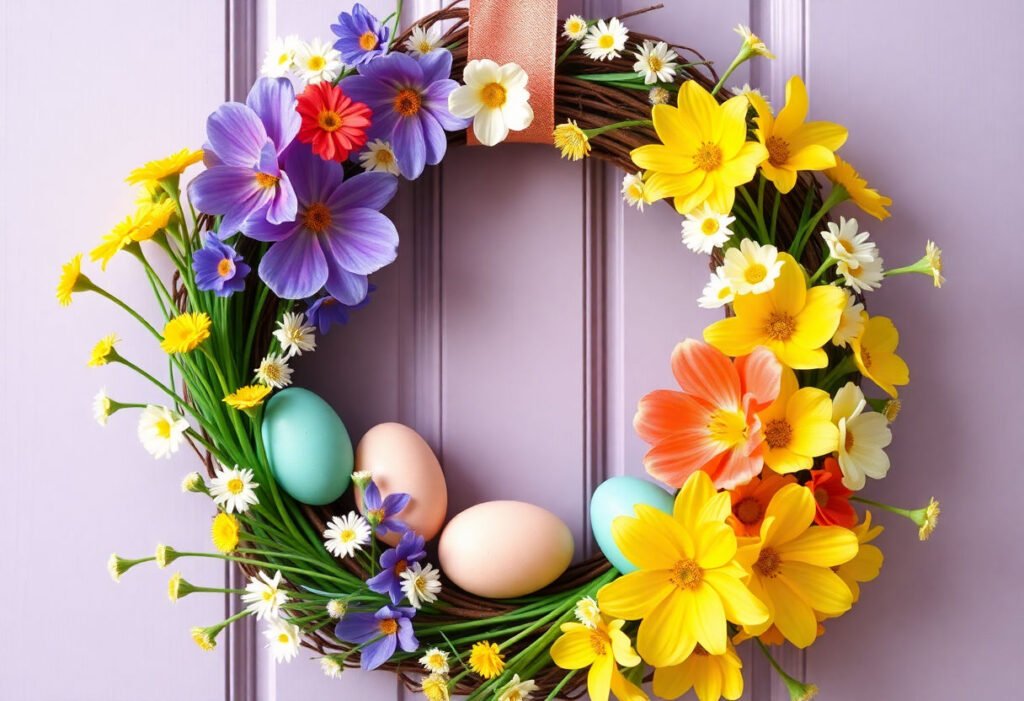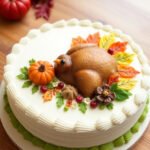Crafting a personalized Easter wreath offers a unique opportunity to embrace the joyous spirit of Easter while adding a creative touch to your home decor. As a cherished symbol of renewal and festivity, an Easter wreath not only celebrates the season but also showcases your personal style. This guide will take you through selecting the ideal base, choosing the right decorations, and incorporating traditional elements. With detailed steps and innovative ideas, you’ll learn how to infuse personal touches and ensure your wreath remains vibrant. Discover the satisfaction of crafting a masterpiece that exudes both charm and warmth throughout the Easter season.
Key Takeaways
- Essential materials for crafting an Easter wreath include a suitable base, decorative flowers, ribbons, and thematic embellishments.
- Basic steps involve selecting the right base, assembling decorations, and ensuring a secure attachment of elements.
- Personalizing your wreath with unique touches can enhance its charm and reflect your individual style.
- Incorporating traditional Easter elements like eggs, bunnies, and pastel colors can intertwine a classic festive theme into your design.
- Proper care and display techniques will preserve your wreath’s appearance and enhance its role in your Easter home decor.
Choosing the Right Base for Your Wreath
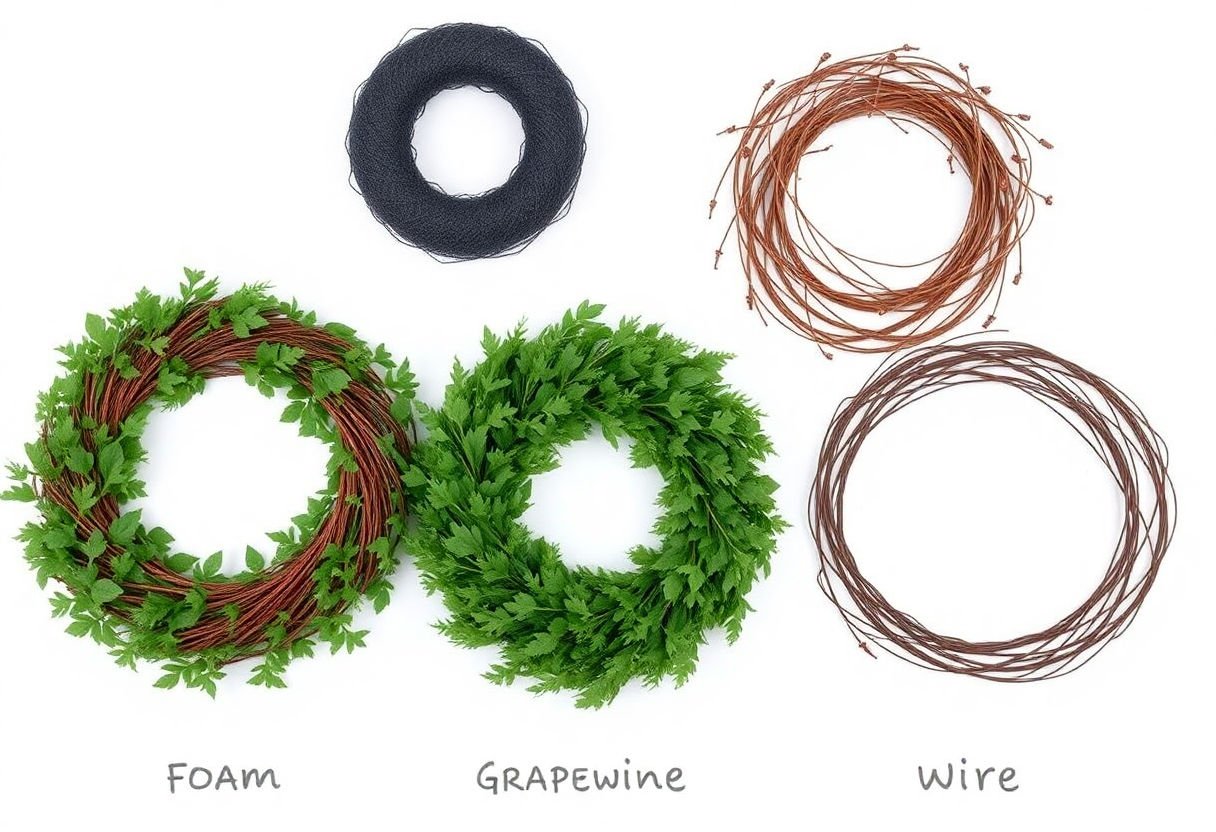
When creating a stunning Easter wreath, choosing the right base is crucial to achieving a visually appealing and durable design. A wide variety of wreath bases are available, each offering distinct aesthetic and practical advantages.
-
Grapevine Wreaths: These rustic bases are made from intertwined grapevines. They provide a natural texture that can complement a variety of Easter themes, from vintage to contemporary. The robust structure also makes them ideal for supporting heavier decorations like ceramic eggs or large bows.
-
Wire and Metal Frames: Known for their sturdiness and flexibility, wire frames are excellent for wreaths that require more intricate designs. They allow for more precise control of the shape and can be easily manipulated for layered arrangements. This type of base is particularly well-suited for modern, sleek decor styles.
-
Styrofoam Forms: Lightweight and easy to work with, Styrofoam bases can be fully covered with fabric, moss, or other materials. This base is often chosen for its versatility; it allows for attaching a variety of decorations with minimal effort. It is the perfect choice for those aiming to include a lot of floral and other delicate elements.
-
Wooden Hoops: More minimalist in nature, wooden hoops provide a simple framework that ensures the decorations remain the focal point. This type of base works best when displaying subtle and elegant designs, and it is ideal for showcasing a select few exquisite materials.
Each type of base brings unique features to your Easter wreath, making it essential to choose one that aligns with your artistic vision and theme for a cohesive and visually pleasing result.
Selecting Materials for Decoration
When selecting materials for decorating your Easter wreath, it is essential to opt for a harmonious blend of elements that embody the spirit of the season. Consider using flowers like daffodils, tulips, and lilies, which not only bring a vibrant splash of color but also symbolize renewal and hope. Artificial flowers can be a practical choice if you desire longevity, offering a diverse range of colors and styles that mimic nature’s beauty.
Ribbons play a crucial role in adding texture and movement to your wreath. Choose ribbons in pastel colors or those with Easter-themed patterns such as bunnies or eggs to create visual interest. Wired ribbons are particularly advantageous as they maintain shape and are easy to arrange.
When it comes to embellishments, think creatively. Incorporating elements like small Easter eggs, butterflies, or bird figurines can enhance the theme of joy and rebirth. Consider using moss, berries, or twigs to incorporate a natural touch, giving your wreath an organic and rustic appearance.
Metallic accents, such as gold or silver, can add a touch of elegance. Use these sparingly to maintain balance while elevating the overall look. Additionally, ensure all materials are weather-resistant if your wreath is destined for outdoor display.
Lastly, be mindful of the scale and proportion; your decorative materials should not overwhelm the base. A thoughtful combination of these elements ensures your Easter wreath reflects your personality and the essence of the celebration.
Tools You Will Need
To craft your own stunning Easter wreath, it is essential to equip yourself with the right tools to ensure the process is smooth and enjoyable. Here’s a comprehensive list of the tools you will need:
-
Glue Gun: A hot glue gun is indispensable for securely attaching decorations and enhancing the durability of your wreath. Make sure to have extra glue sticks on hand to avoid interruptions.
-
Scissors: Invest in a good pair of sharp craft scissors to easily cut through various materials such as ribbons, fabric, and wire. Fabric scissors may also be considered for more delicate items.
-
Floral Wire: Essential for reinforcing the structure of the wreath and securing elements. Choose a thin yet strong wire that can be easily manipulated but provides sturdy support.
-
Wire Cutters: These are necessary for trimming floral wire and other metallic embellishments without dulling your scissors.
-
Pliers: Having a pair of needle-nose pliers will aid in bending and twisting wire snugly and securely around the wreath.
-
Measuring Tape: For precision in spacing and placement, a flexible measuring tape can be very helpful, especially when aligning symmetrical decorations.
-
Craft Knife: A craft knife, or X-Acto knife, is useful for detailed cutting tasks, particularly when working with paper or thin plastic decorations.
-
Ruler or Straight Edge: To ensure straight cuts and measurements, a ruler or a straight edge can be quite beneficial.
Equipping yourself with these tools will not only enhance efficiency but also allow for greater creativity and precision in your Easter wreath-making endeavor.
Step-by-Step Guide to Creating Your Wreath
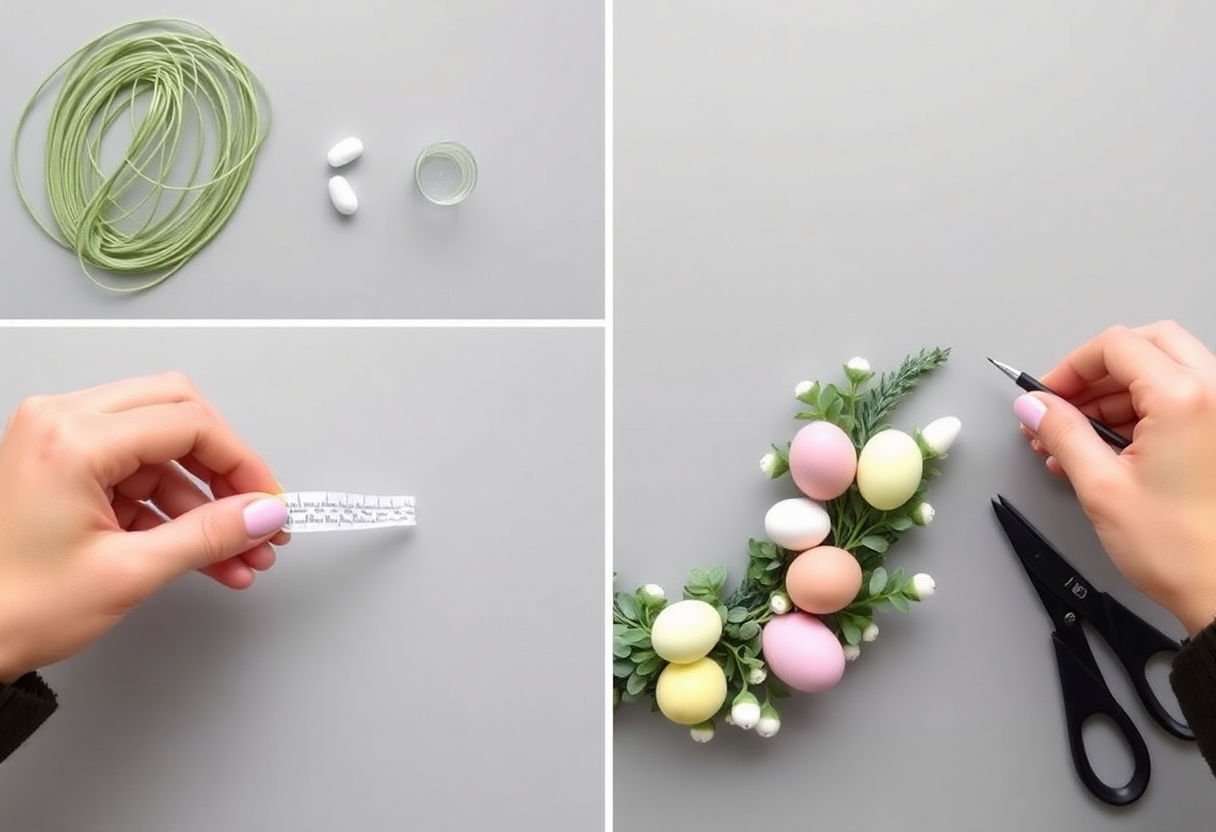
Creating your Easter wreath involves a series of precise steps to ensure a beautiful and cohesive final product. Begin with setting up a comfortable workspace. This will allow for an uninterrupted crafting experience.
Start by securing your base. Whether you have chosen a grapevine, foam, or wire base, make sure it is stable before you begin. Use florist wire or hot glue to attach any sections that need reinforcement.
Next, arrange your primary decorations. This often includes your chosen flowers and greenery. Begin by placing the larger elements first. Position them evenly around the base, adhering each piece with floral wire or glue. Keep the flow of your design in mind to maintain balance and appeal throughout.
Supplement with secondary embellishments such as ribbons, berries, or small pastel eggs. These elements can add color and depth to your wreath. Weave them into the main structure, ensuring they complement rather than overshadow your primary decorations.
Once these elements are in place, review the balance and fullness of your design. Adjust as needed, ensuring there are no sparse areas.
Finally, take time to attach any hanging mechanisms at the back of the wreath. Depending on the weight and type of your wreath, this could be a loop of wire, ribbon, or a purpose-built wreath hanger.
By adhering to these detailed instructions, you can create a personalized Easter wreath that embodies the spirit and beauty of the season, ready to adorn your home with festivity and charm.
Adding Personal Touches
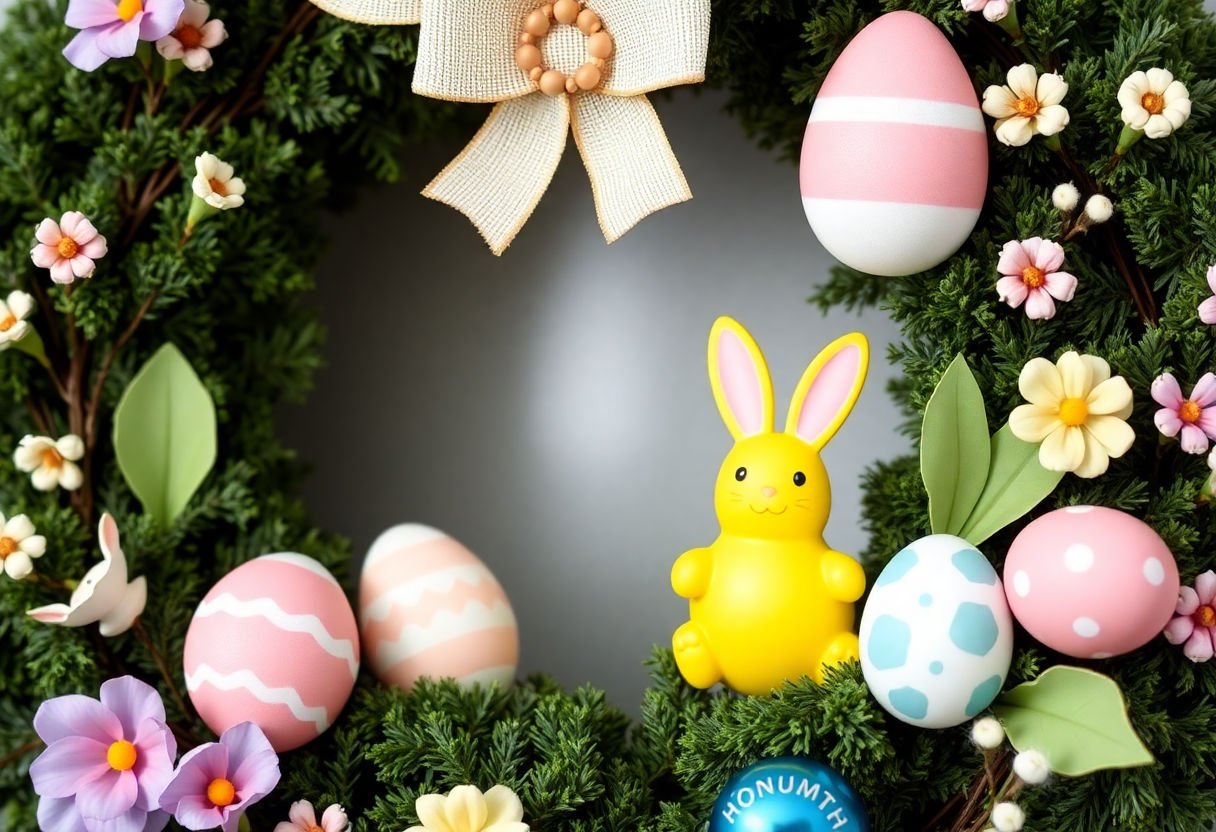
Adding personal touches to your Easter wreath can transform it from a simple decoration to a cherished symbol of the season’s warmth and renewal. Here are some creative ideas to make your wreath truly unique and reflective of your personality.
Incorporate Family Heirlooms: Consider integrating small family heirlooms or meaningful trinkets into your wreath. This could be vintage brooches, buttons, or tiny picture frames holding cherished family photos. This not only personalizes your wreath but also infuses it with sentimental value.
Customized Color Scheme: While pastels and bright colors are traditional for Easter, don’t shy away from choosing a color palette that resonates with your home decor or personal taste. Using ribbons and ornaments in these chosen colors can make your wreath seamlessly blend or strikingly stand out against your home.
Personalized Messages: Add a ribbon or small wooden plaque featuring a meaningful quote or Easter greeting. Handwritten or carefully painted messages can add an intimate touch, showing the thoughtfulness behind your creation.
Use of Natural Elements: Incorporate elements from your surroundings such as pinecones, twigs, or dried flowers which not only enhance the natural beauty of your wreath but also reflect the unique charm of your locale.
Seasonal Aromas: Attaching sachets or small bundles of aromatic herbs like lavender or thyme can provide a delightful fragrance, creating a multisensory experience for those who admire your handiwork.
By weaving these personal touches into your Easter wreath, you create a piece that is not only visually appealing but also rich in personal significance.
Incorporating Traditional Easter Elements
To truly capture the spirit of Easter, incorporating traditional elements into your wreath design can make all the difference. These elements not only enhance the aesthetic appeal but also symbolize various aspects of the Easter celebration.
Easter Eggs: Eggs are synonymous with Easter, representing new life and rebirth. Consider using dyed eggs, plastic eggs, or even intricately designed Fabergé-like eggs as part of your wreath. Opt for a mix of colors and finishes, such as shiny metallics or pastel hues, to create a visually striking contrast.
Bunnies and Chicks: These adorable icons symbolize fertility and new beginnings. Miniature bunny and chick figurines can be nestled amongst the greenery, adding a whimsical touch to your wreath. Choose materials like ceramic or plush for a textural variation that adds depth to the design.
Pastel Colors: Pastels are traditionally associated with Easter, evoking a sense of softness and renewal. Incorporate ribbons, fabrics, or artificial flowers in shades of light pink, baby blue, pale yellow, and lavender. These colors complement each other beautifully and work harmoniously within a spring-themed motif.
Natural Elements: Weaving in natural elements like twigs, moss, and seasonal flowers can ground the traditional symbols with a rustic charm. Consider adding fragrant herbs like lavender or rosemary, which not only look delightful but also add a pleasant scent to your creation.
Remember, integrating these traditional elements doesn’t mean sacrificing your personal style. Be creative, and let your Easter wreath be a reflection of both classic customs and your unique artistic vision.
Caring for Your Wreath
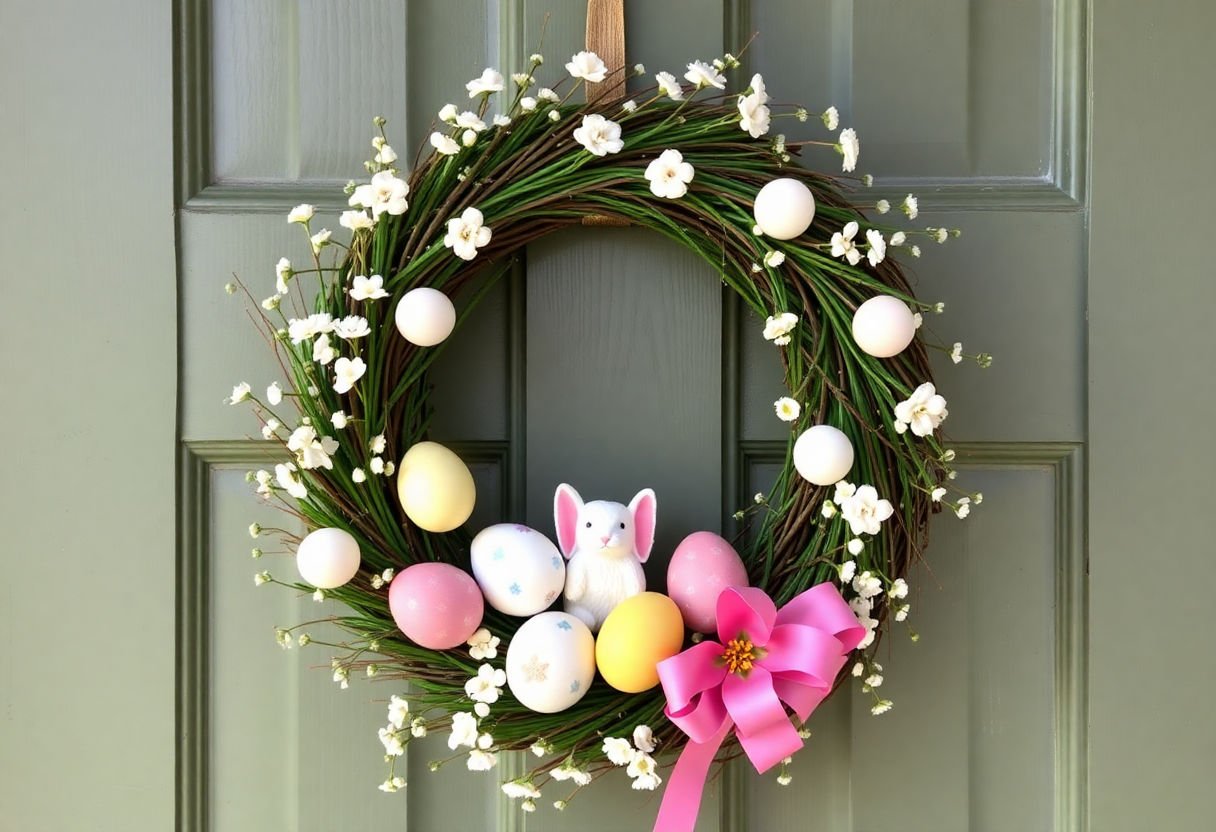
To ensure your Easter wreath maintains its beauty and charm throughout the season, it’s essential to care for it properly. Here are some specific tips to preserve the freshness and vibrancy of your creation.
For natural wreaths, made with fresh flowers and greenery, consider the following:
- Hydration: Keep your wreath hydrated by misting it lightly with water every couple of days, ensuring not to oversaturate. This is crucial to maintaining the vibrancy of the blooms and the greenery.
- Temperature: Display your wreath in a cool, shaded area away from direct sunlight and heat sources like radiators or fireplaces. Excessive heat can cause wilting and premature aging.
- Pre-treatment: If possible, treat the cut ends of the natural materials with a floral preservative before assembling your wreath. This can extend the freshness of your greenery.
For artificial wreaths, follow these guidelines:
- Dust Removal: Dust your wreath regularly using a soft cloth or a feather duster to maintain its appearance. For a deeper clean, use a damp cloth carefully on the synthetic elements.
- Storage: Post-Easter, store your wreath in a cool, dry location, preferably in a wreath storage box to prevent it from being crushed or damaged.
- Avoid Direct Light: Even artificial wreaths should be kept out of direct sunlight for prolonged periods, as this can cause fading.
Remember, thoughtful care can significantly enhance the longevity of your Easter wreath, allowing you to enjoy its beauty throughout the festive season.
Displaying Your Wreath
When it comes to showcasing your handmade Easter wreath, selecting the right location is crucial in enhancing your home’s festive ambiance. Front doors are the most traditional spot, acting as a welcoming statement to guests and family members. Your wreath should be at eye level, centered on the door to catch the immediate attention of visitors. Consider using a door hook or an adhesive hanger that keeps wreaths securely in place without damaging the surface.
If you wish to create a charming indoor setting, consider placing your wreath on interior doors or above a fireplace mantel. This placement not only complements your home’s décor but also keeps the wreath protected from the elements, ensuring its longevity.
For those with outdoor spaces, hanging wreaths on a garden gate or patio wall allows you to extend the Easter celebration into your garden, creating a cohesive theme throughout your property. Ensure that wreaths displayed outdoors are made from durable materials that can withstand weather changes.
Incorporating seasonal lighting can augment your wreath’s appeal under evening lights. Consider battery-operated LED lights woven around your wreath to highlight its intricate designs and enhance its visibility during twilight hours.
Above all, wherever you choose to feature your wreath, ensure it complements the existing decorations and captures the spirit of Easter. Embodying both tradition and personal style, your wreath should be a proud display of your creativity and festive spirit.
Conclusion
Creating your own stunning Easter wreath not only enhances your home decor but also offers the joy of crafting something personal and unique. By carefully selecting the right materials and adding personal touches, you can craft a wreath that reflects your festive spirit and creativity. This endeavor not only celebrates tradition by incorporating elements like eggs and bunnies but also allows for a meaningful engagement with Easter customs. As you embark on this artistic journey, embrace the opportunity to showcase your creativity and bring a touch of Easter charm into your home.
Frequently Asked Questions
What are the essential materials needed to create an Easter wreath?
To create a stunning Easter wreath, you will need a wreath base, floral wire, a hot glue gun, an assortment of silk or dried flowers, decorative ribbons, and thematic elements such as pastel eggs or bunnies.
How long does it usually take to make an Easter wreath?
The time required to create an Easter wreath can vary depending on the complexity of the design. On average, it takes approximately 1 to 2 hours from start to finish, allowing for careful arrangement and attachment of decorative elements.
Can I use fresh flowers in my Easter wreath?
Yes, fresh flowers can be used in your Easter wreath; however, they may require more maintenance to keep them looking fresh. It is advisable to hydrate the stems and check on them regularly to maintain their vibrancy.
How can I personalize my Easter wreath?
Personalizing your Easter wreath can be done by incorporating unique decorations, such as personalized name tags, family initials, or using colors that best match your home décor or family traditions.
How should I store my Easter wreath after the holiday?
Proper storage is crucial to maintain the wreath’s condition. Store the wreath in a cool, dry place, preferably wrapped in tissue paper or stored in a box to prevent dust accumulation and protect delicate decorations.
